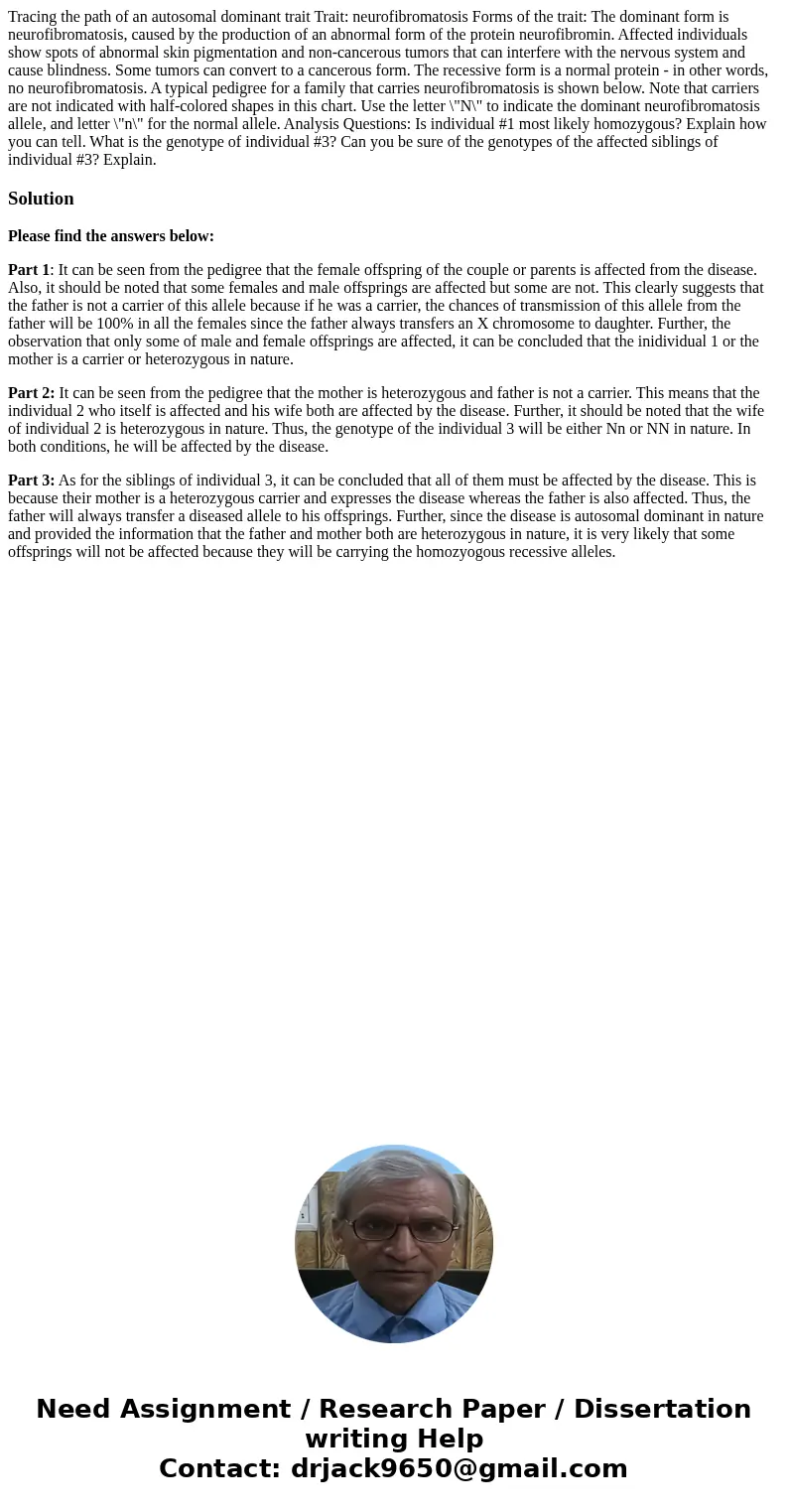Tracing the path of an autosomal dominant trait Trait neurof
Solution
Please find the answers below:
Part 1: It can be seen from the pedigree that the female offspring of the couple or parents is affected from the disease. Also, it should be noted that some females and male offsprings are affected but some are not. This clearly suggests that the father is not a carrier of this allele because if he was a carrier, the chances of transmission of this allele from the father will be 100% in all the females since the father always transfers an X chromosome to daughter. Further, the observation that only some of male and female offsprings are affected, it can be concluded that the inidividual 1 or the mother is a carrier or heterozygous in nature.
Part 2: It can be seen from the pedigree that the mother is heterozygous and father is not a carrier. This means that the individual 2 who itself is affected and his wife both are affected by the disease. Further, it should be noted that the wife of individual 2 is heterozygous in nature. Thus, the genotype of the individual 3 will be either Nn or NN in nature. In both conditions, he will be affected by the disease.
Part 3: As for the siblings of individual 3, it can be concluded that all of them must be affected by the disease. This is because their mother is a heterozygous carrier and expresses the disease whereas the father is also affected. Thus, the father will always transfer a diseased allele to his offsprings. Further, since the disease is autosomal dominant in nature and provided the information that the father and mother both are heterozygous in nature, it is very likely that some offsprings will not be affected because they will be carrying the homozyogous recessive alleles.

 Homework Sourse
Homework Sourse